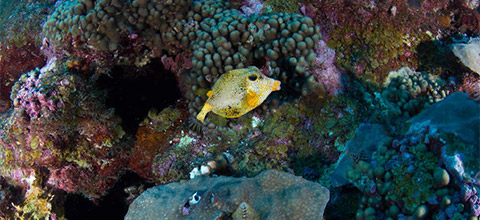Authors:
M.A. Johnston, R.J. Eckert, T.K. Sterne, M.F. Nuttall, X. Hu, J.A. Embesi, E.L. Hickerson, and G.P. Schmahl

Since 1989 a federally supported long-term coral reef monitoring program has focused on two study sites atop East Flower Garden Bank and West Flower Garden Bank (EFGB and WFGB) in the northwestern Gulf of Mexico. This report summarizes fish and benthic community observations and water quality data from 2015 as part of the annual long-term monitoring program jointly funded by NOAA’s Flower Garden Banks National Marine Sanctuary and the Bureau of Ocean Energy Management. The benthic and fish community surveys were conducted by a team of multi-disciplinary scientists using random transects to document components of benthic cover, repetitive photostations to document changes in the composition of benthic assemblages in shallow and deep repetitive sites, and fish surveys to examine fish population composition within designated study sites at EFGB and WFGB. Water quality sampling was conducted quarterly at each bank. In 27 years of continuous monitoring, mean coral cover was above 50% and represented a stable coral community; however, macroalgae mean percent cover has been significantly increasing since 1999. Labridae, Pomacentridae, and Serranidae were the dominant fish families at both banks. Cooler than normal seawater temperatures were recorded in the late summer of 2015, and nutrient analysis indicated no detectable levels of nutrients in seawater throughout the year. Despite global coral reef decline in recent decades, EFGB and WFGB have suffered minimally from hurricanes, coral bleaching, and disease, and the reef supports relatively diverse and abundant benthic and fish populations.
Key Words:
Coral, Fish, Flower Garden Banks, Gulf of Mexico, Monitoring, Water Quality

